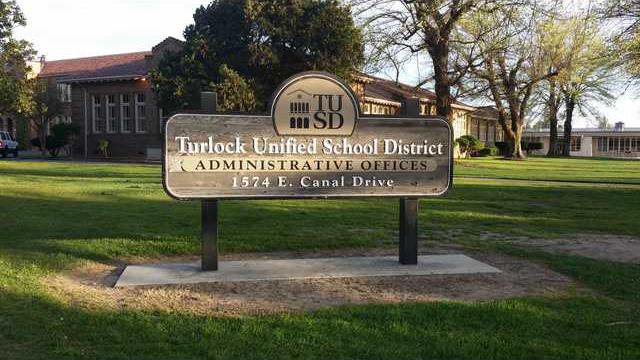California Assessment of Student Performance and Progress results for TUSD
Total number of students enrolled in grades tested in District: 8,287
Total number of students tested in District: 8,215
English Language Arts/Literacy
Standard exceeded: 12%
Standard met: 28%
Standard nearly met: 28%
Standard not met: 32%
Mathematics
Standard exceeded: 8%
Standard met: 17%
Standard nearly met: 33%
Standard not met: 42%
The results from the first year of the California Assessment of Student Performance and Progress, which were released by the California Department of Education on Wednesday, painted a bleak picture as to how students throughout the state are adapting to new Common Core State Standards.
With over 8,000 students in grades three through eight and grade eleven tested in Turlock Unified School District, only 40 percent met the English language arts/literacy standard and an even smaller 25 percent met the mathematics standard.
Additionally for English language arts/literacy, 12 percent of students exceeded the standard, 28 percent nearly met the standard and 32 percent did not meet the standard. For mathematics, 8 percent of students exceeded the standard, 33 percent nearly met the standard and 42 percent did not meet the standard.
Despite these less-than-satisfactory numbers, TUSD Interim Superintendent Dana Salles Trevethan is not discouraged—rather, since this is the first year of data, she views them as a baseline for future progress.
“We realize these test scores are a part of a larger picture and just one of many multiple measures of assessment, but we will use these scores to focus on specific areas of instruction in tandem with a guaranteed and viable curriculum—both of which are supported by TUSD’s Multi-Tiered System of Supports,” said Trevethan.
Trevethan also added that when compared to local district and county averages, as well as the state, TUSD met or slightly exceeded their results in several areas in English language arts and mathematics respectively.
“As difficult and complicated as the transition to the New Standards has been over the past several years, our staff, students and parents need to be applauded for their tenacity and endurance in working collaboratively together to make it most doable and meaningful,” said Trevethan.
CAASPP includes a number of assessments, but the most widely given are the Smarter Balanced Summative Assessments, which are given to students in grades three through eight and grade eleven to evaluate progress on the California standards in mathematics and English language arts/literacy, more commonly known as Common Core.
“The results show our starting point as a state, a window into where California students are in meeting tougher academic standards that emphasize critical thinking, problem solving, and analytical writing,” said State Superintendent of Public Instruction Tom Torlakson. “California’s new standards and tests are challenging for schools to teach and for students to learn, so I am encouraged that many students are at or near achievement standards.
“However, just as we expected, many students need to make more progress. Our job is to support students, teachers, and schools as they do,” continued Torlakson.
The CAASPP tests for English language arts/literacy and mathematics consisted of two parts: an adaptive test taken on a computer that gives students different follow-up questions based on their answers and a performance task that challenges students to apply their knowledge and skills to real-world problems.
For this test, students’ scores fall into one of four achievement levels: standard exceeded, standard met, standard nearly met, and standard not met.
The new online assessments were administered to approximately 3.2 million students last spring to measure their progress in learning the new, more rigorous academic standards designed to prepare them for college and careers in the 21st century.
These results encompass the first year of CAASPP. Since this test is substantially different from its predecessor Standardized Testing and Reporting program, Torlakson said these results will serve as a baseline from which to measure future progress and should not be compared to results from the state’s previous assessments.
“Assessments are like satellite photos—they are snapshots taken at one moment in time,” said Torlakson. “There are many positive changes underway in California’s schools, and I expect CAASPP scores to rise in coming years as students and teachers get more support and more experience with these new standards and assessments.”
The CDE also released results on the California Standards Test for science, which is given to students in grades five, eight and ten. However, these tests are not aligned with California’s recently adopted Next Generation Science standards. Assessments based on these standards are currently being developed.
To view broken down test results by county, district, and schools across the state, visit caaspp.cde.ca.gov.





